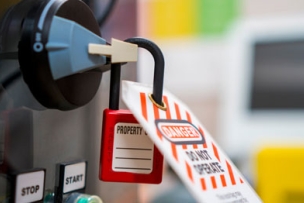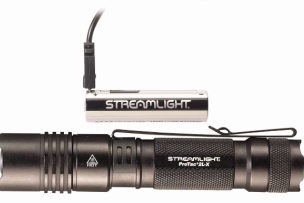Fire is a direct threat not only to life, but also to the health of a business, and it is why employers need a full fire prevention strategy that harnesses the very latest technologies and devices that can help mitigate these adverse events.
Taking preventive steps can help, of course, and this may include improving worker training, performing fire emergency drills and performing regular inspections of equipment to lower the risk of a fire and prepare employees in case a fire breaks out in the workplace.
Technology can help, too. Indeed, some of the newest technologies help you detect and stop fires before they start, reducing the cost of fire damage and repairs.
These technologies include:
- Connected switchboards that are built to provide superior power distribution, monitoring and control.
- Heat sensors, which can detect when temperatures have reached a certain level.
- Circuit breakers that are designed to protect a building from a fire caused by overheated wires.
- Residual current devices, or RCDs, that can detect an imbalance in current, providing fault protection.
- Arc fault detection devices, which monitors for the electric arcs that indicate loose connections in wiring.
- Thermal monitors, which track changes in air temperature.
Read more: Workplace Fall Protection: How to Use a Safety Harness and Lanyard
Some of these technologies may even use predictive maintenance to improve equipment reliability and reduce costly corrective maintenance and unplanned outages that result from unexpected equipment failure.
Predictive Maintenance: Making Good Use of Your Data
At a time when data is viewed as a vital business asset, companies must use it to help improve safety for their employees. Harnessing data and processing it can improve risk calculations and identify potential problems.
Whereas facilities once took a corrective maintenance approach, repairing assets after a device had broken down and incurring the costs of repairs and downtime, industrial plants are now moving from reactive maintenance to predictive approaches.
Predictive maintenance uses data analysis tools and techniques to find anomalies in your systems, equipment and processes so you can fix them before they result in errors, or, as in this case, a possible costly electrical fire.
Digital technologies used for predictive maintenance may include:
- Sensors on equipment that allow for remote, continuous condition monitoring and data collection.
- Edge computing at the equipment level that facilitates user interaction through software.
- Cloud-based platforms where advanced analytics can merge and correlate data from a variety of sources.
- Big data analytics services with smart algorithms that can emulate equipment behavior and predict when it may fail.
Take, for example, an electrical switchboard, which is the heart of a building’s power distribution system and a common starting point for building fires. These devices can become infested by rodents and be vulnerable to internal overheating, which can raise the risk of an electrical error and lead to a fire.
When an error occurs, a dangerous sequence of events can take place. The circuit failure can increase electrical contact resistance, which leads to further deterioration and can lead to a rise in temperature, further deteriorating the connection surface. More deterioration leads to more contact resistance. The continued escalation of temperature and resistance can lead to a complete connection failure, raising the possibility of a fire.
Persistent monitoring and predictive maintenance are key to limiting fire risk in devices such as switchboards, notes Schneider Electric in a recent blog post, given that “circuits age unevenly and unpredictably.”
Analyzing large volumes of data given off by monitoring devices can provide constant monitoring of the health of your circuitry and provide active recommendations to schedule maintenance checks.
In addition to this, thermal monitoring devices that measure the ambient temperature help in the early detection of faulty connections and temperature increases. These devices may be installed in areas of the switchboard that are most vulnerable to deterioration.
Schneider is even developing heat sensors that can detect gas particles emitted by cables to alert operators to dangerously high temperatures before they turn critical.
Read more: Fall Protection: 3 Tips for Tackling OSHA’s Most Common Violation
Fire Monitoring and Proactive Action
These solutions—and others—may serve to cut the cost of fire damages and the resulting repairs, while giving building operators visibility into the performance of their electrical systems.
RCDs automatically switch off the electricity if there is a fault. Products such as Schneider’s ComPact NSX range “offer earth leakage protection with the same footprint as a classical overload and short-circuit protection.” The product “can also offer permanent earth leakage current measurement which, when connected to a monitoring system, allows pre-alarming and monitoring during the time of any drift in the insulation.”
The extra protection that technology can provide helps organizations move beyond the minimum standards of fire prevention.
Schneider notes that mistakes made during the installation of electrical networks in buildings is a potential “blind spot” that can lead to electrical fires. Fires can result from loose cabling or aging circuits that can go undetected by conventional inspections. Large buildings with extensive wiring networks are especially vulnerable, says Schneider.
That extra protection comes from monitoring the switchboard and the circuits at all levels of the electrical installation, which is supported by a “centralized system for monitoring and proactive action.”
Other more traditional detection technologies include installed smoke alarms, which can alert employees to an active fire. Similarly, video image detection makes use of thermal images to detect fires by analyzing those images for analyses for surface temperature changes.
Cameras scan an area and then the footage is analyzed for signs of smoke or fire. If a telltale sign of a fire is detected, the computer sends a signal to the alarm system. These systems can even use footage taken from your existing camera networks inside facilities.
Manufacturers should be well prepared for the threat of fire. Taking preventive steps—such as investing in detection technology, designing a smart disaster response plan or ensuring workers undergo regular training—can help mitigate the risk of these potentially deadly events and keep your employees safe.
What steps are you taking to mitigate the risk of a damaging fire inside your facility? Share your thoughts in the comments below.





Talk to Us!
Leave a reply
Your email address will not be published. Required fields are marked *